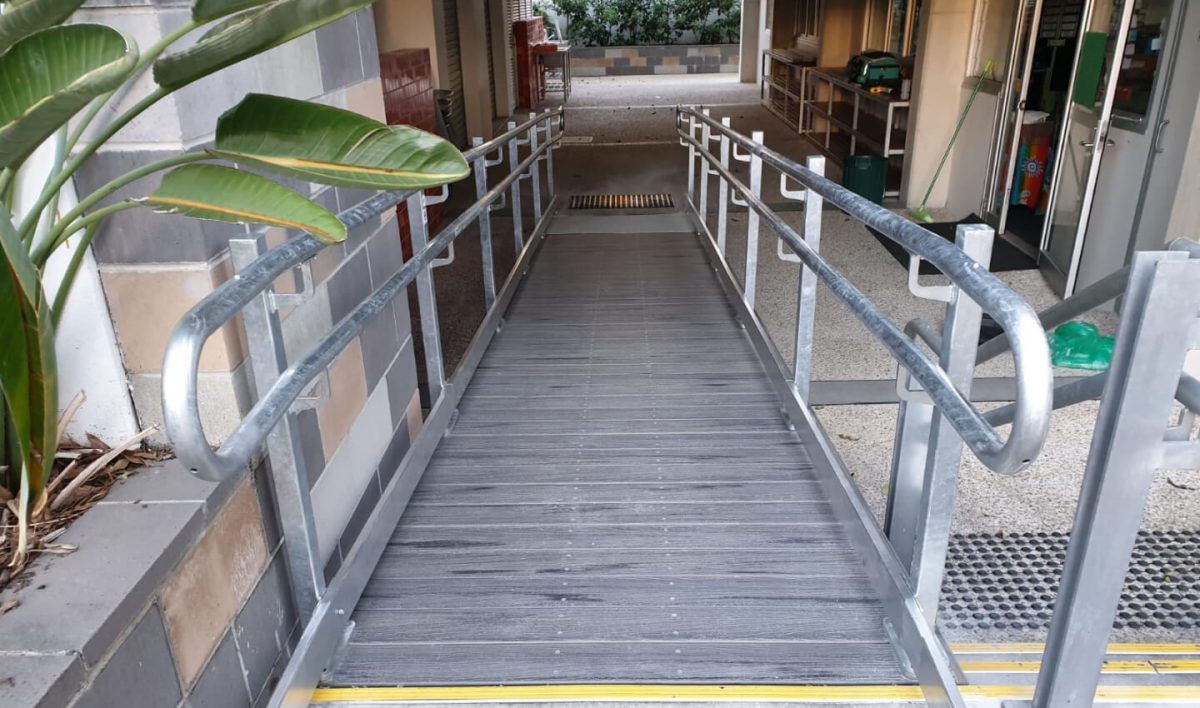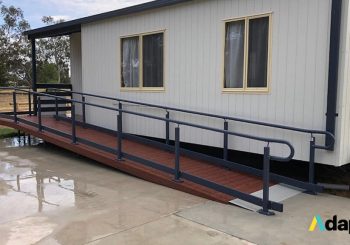Ramps play an important role in improving the accessibility of properties by providing individuals with mobility issues with a safe way to cross thresholds. Although the objective of access ramps is to improve accessibility and overall safety, several factors can make them unsafe if not addressed properly.
Knowing what these factors are is important to maintain the safety and usability of your property’s wheelchair ramp.
 Non-compliance with Australian Standards
Non-compliance with Australian Standards
One of the main factors that can make an access ramp unsafe in Australia is non-compliance with relevant regulations, such as the Australian Standards (AS). AS 1428.1 sets out the requirements for accessible building design.
It has provisions outlining the proper specifications of a ramp’s various components, such as its gradient, width, and handrails. Failure to adhere to these standards can result in a ramp that is too steep, too narrow, or lacks proper handrails, which can compromise its overall accessibility and safety.
Lack of Maintenance
Like any type of structure, access ramps require regular maintenance to ensure their safety and functionality. In Australia, exposure to harsh weather conditions, such as heavy rainfall, extreme heat, UV radiation, and ice formations, can take a toll on ramp materials, leading to deterioration and safety hazards.
Conducting regular inspections and maintenance is crucial to address issues such as loose handrails, slippery surfaces, uneven slopes, and other structural problems that have the potential to cause accidents.
Lack of Handrails
Handrails play a crucial role in providing stability and support for individuals using ramps. A ramp without handrails can be dangerous, especially for those with limited mobility or balance issues.
Handrails should be installed on both sides of the ramp and should be of a height that is comfortable for users to grip. It should also follow the design specifications indicated in AS 1428.1.
Inadequate Lighting
Access ramps that are installed in areas that are poorly lit can be hazardous. Inadequate lighting can obscure potential obstacles or changes in ramp elevation, which can increase the risk of accidents.
Proper lighting design, including the use of sufficient lighting levels and glare reduction measures, is crucial to help ramp users clearly see the path ahead of them.
Obstructed Pathways
Obstructions on access ramps can take many forms, such as pieces of trash, dirt and debris on the surface, and bins. Aside from these, larger objects, such as vehicles parked directly in front of a ramp can also be considered hazardous as they impede access to the ramp.
In addition, obstructions create unnecessary obstacles that can prevent users from properly entering or crossing disabled access ramps, which increases the risk of accidents.
Inadequate Landings
Landings refer to the flat surfaces located at the top, bottom, and sometimes middle sections of access ramps. They can also be found in sections of a ramp where it changes directions. Their purpose is to provide users with a place where they can rest and maneuver safely while traversing a ramp.
A landing that is not placed properly or doesn’t follow the correct specifications can make it difficult for users to safely enter or exit a ramp. According to the AS, the landings of ramps with 90 to 120-degree turns should have dimensions of at least 1,540 x 2,070 millimetres to provide wheelchair users with enough space to safely turn.
These are some of the factors that can affect the safety and usability of wheelchair ramps as well as modular aluminum ramps. These issues can be avoided through proper maintenance and with the help of a credible ramp builder and supplier, such as Adapta Ramps.
At Adapta Ramps, we ensure that all of the ramps that we release are made from sturdy materials that can withstand Australia’s harsh outdoor conditions. More importantly, strictly follow all the guidelines set by the AS and the Disability Discrimination Act to ensure that your property complies with the latest accessibility standards.



